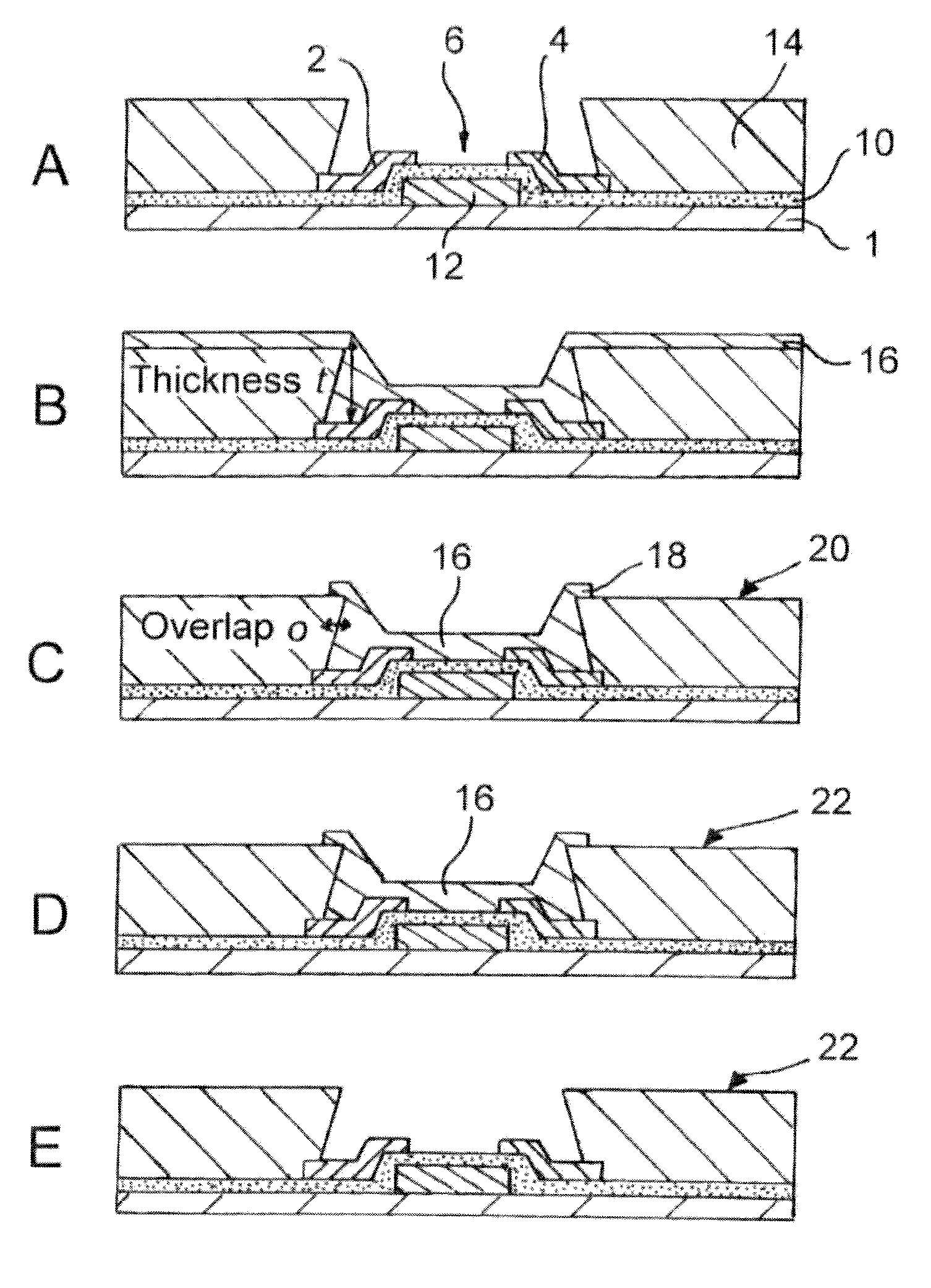Organic Thin Film Transistors, Active Matrix Organic Optical Devices and Methods of Making the Same
- Summary
- Abstract
- Description
- Claims
- Application Information
AI Technical Summary
Benefits of technology
Problems solved by technology
Method used
Image
Examples
Embodiment Construction
[0035]Embodiments of the present invention introduce an additional resist patterning step into the OTFT process flow to protect the sensitive gate dielectric from damage during the surface treatment of the well-defining bank material prior to OSC deposition. In the preferred embodiments this is done without the need for an additional resist mask. Thus embodiments have the potential for obtaining good OTFT performance whilst retaining optimum printing performance during OSC deposition.
[0036]FIG. 5 shows the method steps involved in forming a bottom-gate organic thin film transistor according to an embodiment of the present invention. Like reference numerals to those used in FIGS. 1 to 4 have been used for corresponding parts. FIG. 5(A) depicts the device structure under development prior to OSC deposition. This structure is formed by depositing a gate electrode 12 on a substrate 1, depositing a gate dielectric 10 over the gate electrode 12, depositing source and drain electrodes 2, 4...
PUM
 Login to View More
Login to View More Abstract
Description
Claims
Application Information
 Login to View More
Login to View More - R&D Engineer
- R&D Manager
- IP Professional
- Industry Leading Data Capabilities
- Powerful AI technology
- Patent DNA Extraction
Browse by: Latest US Patents, China's latest patents, Technical Efficacy Thesaurus, Application Domain, Technology Topic, Popular Technical Reports.
© 2024 PatSnap. All rights reserved.Legal|Privacy policy|Modern Slavery Act Transparency Statement|Sitemap|About US| Contact US: help@patsnap.com










